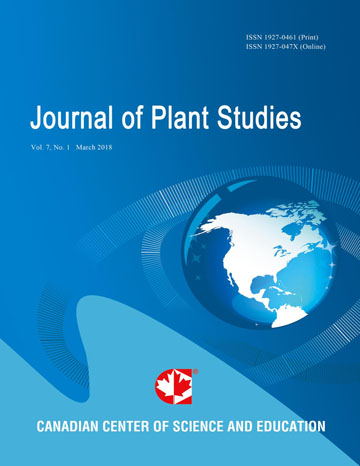Variability, Heritability and Genetic advance of introduced upland rice genotypes at Fogera in North Western Ethiopia
- Mersha Tezera
Abstract
Variability, heritability and genetic advance are basic in order to provide information for plant breeding programs. Forty nine upland rice genotypes were tested in 7*7 simple lattice design at Fogera in Wereta station of Adet Agricultural Research Center in 2012/13. The objectives of the study were to estimate the genetic variability, heritability and genetic advance of the genotypes tested. Analysis of variance revealed that there was highly significant difference among the 49 genotypes for all the characters studied. Accessions IR 78937-B-3-B-B-1 and IR 78937-B-3-B-B-2 had the highest yield with a score of 5374.5 kg/ha and 5305.6 kg/ha respectively. The high yielding genotype IR 78937-B-3-B-B-1 had a yield advantage of 57% and 22.2%, respectively, as compared to standard checks Nerica-4 and Hidasie. Phenotypic coefficient of variation (PCV) values ranged from 2.5% for panicle length to 49.98% for number of spikelet per panicle. While the genotypic coefficient of variation (GCV) ranged from 2.4 % for panicle length to 47.6 % for number of spikelet per panicle. Number of tiller per plant (22.47%), number spikelet per panicle (49.98%), thousand seed weight (25.56%) and yield (23.93%) had higher PCV values. The PCV values for flag leaf length (14.79%), flag leaf width (16.12%), and culm length (16.42%) and number of panicle per plant (16.32%) were medium. Flowering cycle (7.81%), maturation cycle (2.9%), and panicle length (2.5%) had lower PCV values. GCV values were low for flowering cycle (7.21%), maturation cycle (1.82%) and panicle length (2.4%); medium for flag leaf length (14.26%), flag leaf width (15.39%), culm length (15.19 %) and number of panicle per plant (15.72%); high for number of tillers per plant (22.18 %), yield (23.07%), thousand seed weight (25.18%) and number of spikelet per panicle (47.60%). The high GCV values of these characters suggest that genetic impact is higher and environmental influence is lower. This study generally had indicated that there was significant genetic variability or divergence among the genotypes. Thus, the improvement program of the upland rice genotypes through direct selection rather than a lengthy crossing program is recommended.
- Full Text:
 PDF
PDF
- DOI:10.5539/jps.v10n2p30
Index
- AGRICOLA
- CAB Abstracts
- CABI
- CAS (American Chemical Society)
- CNKI Scholar
- Elektronische Zeitschriftenbibliothek (EZB)
- Excellence in Research for Australia (ERA)
- Google Scholar
- JournalTOCs
- Mendeley
- Open policy finder
- Scilit
- Standard Periodical Directory
- Technische Informationsbibliothek (TIB)
- WorldCat
Contact
- Joan LeeEditorial Assistant
- jps@ccsenet.org
